Categoría "Linux"
Se han encontrado 30 Coincidencias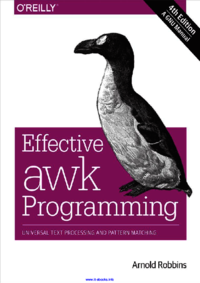
Effective awk Programming: Universal Text Processing and Pattern Matching
AWK
33 Visitas | 66 Descargas | 2015-03-10 22:21:52 | cbustillo
When processing text files, the awk language is ideal for handling data extraction, reporting, and data-reformatting jobs. This practical guide serves as both a reference and tutorial for POSIX-standard awk and for the GNU implementation, called gawk. This book is useful for novices and awk experts alike. In this thoroughly revised edition, author and gawk lead developer Arnold Robbins describes the awk language and gawk program in detail, shows you how to use awk and gawk for problem solving, and then dives into specific features of gawk. System administrators, programmers, webmasters, and other power users will find everything they need to know about awk and gawk.
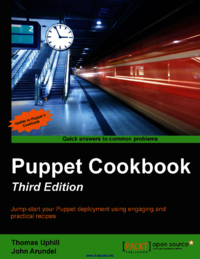
Puppet Cookbook, 3rd Edition
Sistemas desatendidos
22 Visitas | 53 Descargas | 2015-04-17 12:08:30 | cbustillo
Puppet is a configuration management system that automates all your IT configurations, giving you control of what you do to each node, when you do it, and how you do it. Puppet Cookbook Third Edition takes the reader from a basic knowledge of Puppet to a complete and expert understanding of Puppet's latest and most advanced features. Updated with the latest advancements and best practices, it gives you a clear view on how to "connect the dots" and expands your knowledge to successfully use and extend Puppet. This book delves into various aspects of writing good Puppet code, which includes using Puppet community style, checking your manifests with puppet-lint, and learning community best practices, with an emphasis on real-world implementation.
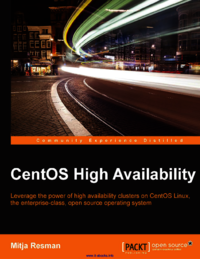
CentOS High Availability
Linux
18 Visitas | 50 Descargas | 2015-05-27 01:03:08 | cbustillo
The high performance and stability of CentOS Linux are the key factors that make CentOS Linux the right Linux distribution to build high availability solutions on. This book introduces you to high availability before briefly walking you through the cluster stack and its layers. The book is then divided into two parts, part A and part B, based on CentOS versions 6 and 7 respectively. Each part begins with the installation and configuration of the Corosync cluster messaging software with CMAN or with the Pacemaker cluster resource management software. You will also be introduced to cluster service configuration and cluster service management before you configure fencing or STONITH on CentOS 6 and CentOS 7. By the end of this book, you will have the skills required to independently design, implement, and maintain a CentOS high availability multinode cluster environment.
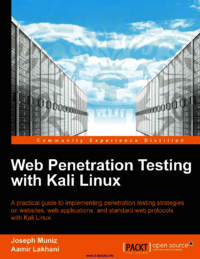
Web Penetration Testing with Kali Linux
109 Visitas | 232 Descargas | 2015-07-16 16:12:05 | efirvida
A practical guide to implementing penetration testing strategies on websites, web applications, and standard web protocols with Kali Linux.
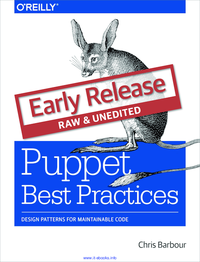
Puppet Best Practices
Instalaciones desatendidas
26 Visitas | 47 Descargas | 2015-09-07 20:47:54 | cbustillo
If you're already up to speed on Puppet and know how to write a basic module, this practical book takes you a critical step further with best practices for building out your Puppet infrastructure. You'll learn how to avoid pitfalls that often leave many teams struggling to maintain what they already have. Ideal for DevOps engineers - and written to cover the upcoming Puppet 4 release - this book shows you how best to deploy Puppet with long-term maintenance and future growth in mind. This book clearly picks up where other Puppet resources leave off.
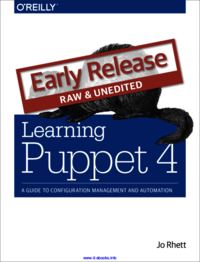
Learning Puppet 4
Instalaciones desatendidas
26 Visitas | 49 Descargas | 2015-09-07 21:03:49 | cbustillo
With this practical book, you'll not only come to understand the specifics of the popular Puppet configuration management tool, but you'll also learn important configuration management concepts and various deployment methodologies. It's ideal for system administrators, developers, and anyone else interested in ensuring that their application deployments go smoothly.
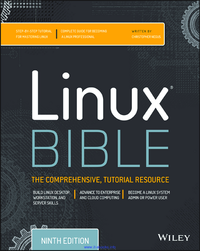
Linux Bible, 9th Edition
Linux
141 Visitas | 271 Descargas | 2015-09-18 01:07:57 | cbustillo
Linux Bible, 9th Edition is the ultimate hands-on Linux user guide, whether you're a true beginner or a more advanced user navigating recent changes. This updated ninth edition covers the latest versions of Red Hat Enterprise Linux 7 (RHEL 7), Fedora 21, and Ubuntu 14.04 LTS, and includes new information on cloud computing and development with guidance on Openstack and Cloudforms. With a focus on RHEL 7, this practical guide gets you up to speed quickly on the new enhancements for enterprise-quality file systems, the new boot process and services management, firewalld, and the GNOME 3 desktop. Written by a Red Hat expert, this book provides the clear explanations and step-by-step instructions that demystify Linux and bring the new features seamlessly into your workflow. This useful guide assumes a base of little or no Linux knowledge, and takes you step by step through what you need to know to get the job done.
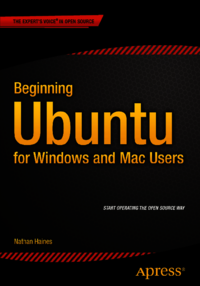
Beginning Ubuntu for Windows and Mac Users
Linux
66 Visitas | 100 Descargas | 2015-10-26 04:27:39 | mmartin
Beginning Ubuntu for Windows and Mac Users is your comprehensive guide to using Ubuntu. You already know how to use a computer running Windows or OS X, but learning a new operating system can feel daunting. If you've been afraid to try Ubuntu because you don't know where to start, this book will show you how to get the most out of Ubuntu for work, home, and play. You'll be introduced to a wide selection of software and settings that will make your computer ready to work for you.Ubuntu makes your computing life easy. Ubuntu's Software Updater keeps all of your software secure and up-to-date. Browsing the Internet becomes faster and safer. Creating documents and sharing with others is built right in. Enjoying your music and movie libraries helps you unwind.Ubuntu is the worlds third most popular operating system and powers desktop and laptop computers, servers, private and public clouds, phones and tablets, and embedded devices. There's never been a better time to install Ubuntu and move to an open source way of life. Get started with Beginning Ubuntu for Windows and Mac Users today!
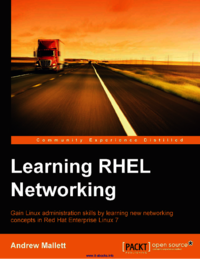
Learning RHEL Networking
Linux
31 Visitas | 57 Descargas | 2015-12-03 02:37:25 | cbustillo
Red Hat Enterprise Linux (RHEL) is the most popular Linux distribution currently being used and can be deployed on many platforms. Enterprises that have a large number of systems need to be interconnected, configured, and managed effectively. RHEL networking lets you accomplish these tasks easily. This is a highly-detailed guide to help with your deployments on RHEL 7 or CentOS 7. This book, based on RHEL 7.1, will introduce to you the fundamentals of networking your systems. You will learn the use of new consistent names to identify your network cards. Soon, you will move on to configuring the basic plumbing of your network, setting up time, network address assignment, and name resolution. Last, the focus moves to configuring the new kernel-based iSCSI target services on RHEL 7 and using the service to host storage area networks.
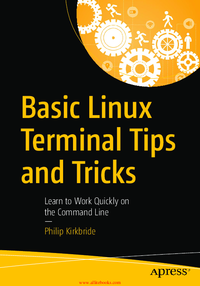
Basic Linux Terminal Tips and Tricks
Learn command line tricks, programs, and hacks you can use day to day as a Linux user, programmer, and system administrator. When you interact with the digital world, you can’t go far without interacting with Linux systems. This book shows you how to leverage its power to serve your needs.
27 Visitas | 24 Descargas | 2020-10-04 12:41:25 | moliver
Many users know "top" is installed on almost all Linux machines, but did you know with a few keystrokes you can customize it specifically for your needs? Stuck using `cd` and `ls` commands for navigating file systems? This book looks at how you can use Ranger to quickly navigate through multiple levels of folders, and quickly run bash commands without ever leaving the terminal. We also suggest programs that can be used for common tasks such as finding which programs are using the most processing, data download/upload, and file space. You’ll know how to quickly connect to remote machines and run your commonly needed jobs in a keystroke or even on auto-pilot. With Basic Linux Terminal Tips and Tricks you'll be equipped with a wide range of tools that can be used for daily work and maintenance on all sorts of Linux systems including servers, desktops, and even embedded devices.
Contribuir
Usted puede contribuir con Libros UCLV, es importante para nosotros su aporte..
Contribuir